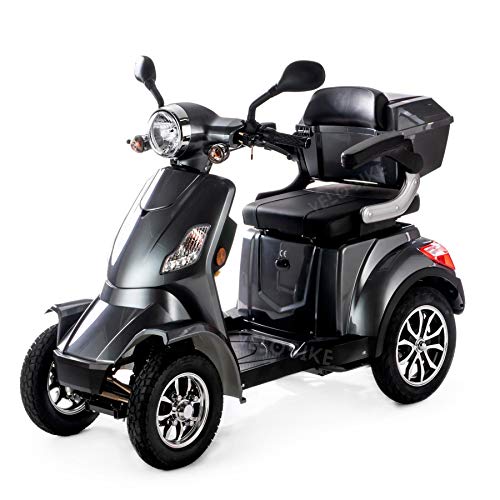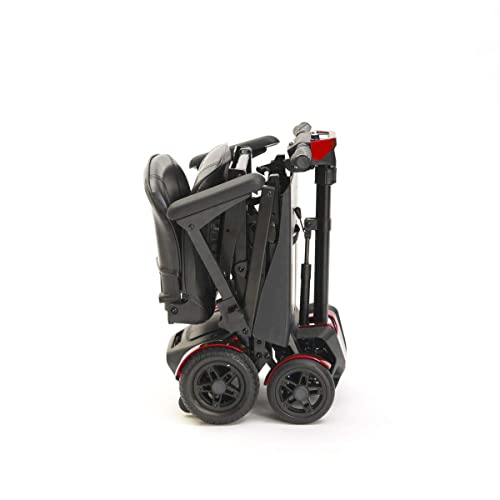10 Mistaken Answers To Common Electric Micro-Mobility Questions Do You…
페이지 정보

본문
 NYCHA and EV Micro-Mobility
NYCHA and EV Micro-MobilityEV micro-mobility is an affordable method of filling gaps in the first and last mile and complements public transportation. NYCHA recognizes that e-bikes as well as e-scooters are essential to residents with low incomes and can provide opportunities to exercise, particularly when shared.
 However, they also pose a unique set of issues. They must be monitored, tracked and controlled.
However, they also pose a unique set of issues. They must be monitored, tracked and controlled.Accessibility
Electric micro-mobility is an ever-growing segment of the transportation sector. It offers service providers and technology opportunities to change urban mobility paradigms, and also reduce congestion. However, the growth of this sector has also brought challenges to the sector. These challenges include data gathering as well as safe battery installation and establishing charging infrastructure. These issues should be addressed to ensure that lightweight electric mobility foldable Scooter micro-mobility is available for everyone, including people with disabilities.
Electric-powered bikes, scooters and other light, compact devices allow users to go further and faster, while also providing greater comfort than they would with traditional scooters and https://www.jtayl.me bikes. They are able to be used on sidewalks, city streets or bike paths, as well as trails. They are powered by a lithium-ion battery and can travel up to 20 miles on one charge. They can be bought for personal use or rented via a sharing system.
A increasing number of cities around the globe are integrating cutting-edge E-scooter and ebike systems into their shared mobility networks. They have been able to reduce their emissions, and improve their efficiency. They also offer new transit options for those who otherwise be dependent on transportation via cars. These vehicles have improved access to mobility services and have helped communities get through emergencies like oil shortages and severe weather disruptions.
In the United States, the e-bike market has seen a rapid growth in recent years, fueled by technological advancements and a growing consumer demand. The market is dominated by a few companies, including Ninebot, Segway, and Yunxi which produce high-quality products that are priced at a reasonable price. These companies are working to expand their market share through aggressive marketing strategies and partnerships with bicycle makers.
Although ebikes, escooters electric scooters and other devices for micromobility consume a small amount of electricity, they will increase the energy demand on the grid. This will require significant investments in infrastructure and charging stations. Utilities can prepare for the increasing demand by leveraging smart grid technologies to analyze consumer charging behaviors, introduce demand-response initiatives, and offer incentive-based rates plans for EV charging.
The fire risks that could be associated with e-micromobility remain a serious concern despite their promise to promote social equity and economic opportunity. In addition, the growing number of e-micromobility devices within public housing will result in stricter regulations to ensure the safety of residents. The policies for e-micromobility of NYCHA are designed to avoid injuries, fires and other incidents while providing residents with a convenient and affordable alternative to public transportation.
Energy efficiency
4 wheel electric mobility scooter micro-mobility consumes less energy than traditional vehicles, and is also more eco-friendly. Its battery is made from renewable sources and emits no carbon dioxide. This is a major advantage for cities striving to achieve carbon neutrality and reduce pollution from the air. The vehicles are also simpler to park and quieter than cars.
These new vehicles, whether an escooter, an four wheels electric mobility scooter bike or even a monowheel, are changing the way people move around urban areas. Their growing popularity has prompted cities to think about their impact on sustainable mobility. Based on the model and power source, electric micro-mobility can help reduce traffic congestion and improve air quality and help save money on fuel. The new vehicles may also challenge existing infrastructures and laws.
E-scooters are the most well-known micromobility device. They are compact, electrically powered scooters which can be rented through smartphone apps. They can travel at speeds of up 30 km/h and be ridden on sidewalks, bicycle paths, or streets. Other options for micromobility are e-bikes and rickshaws.
These innovative transportation options are gaining popularity and the modal portion of EMM is expected to grow by 5-10 percent in Europe by 2030. However, researchers must better understand the factors that influence EMM use, including the contextual and individual factors. This scoping review examines the current understanding of the factors that influence of EMM use and suggests the future research priorities.
There are many obstacles to the widespread adoption of electric micromobility. The lack of charging infrastructure for electric scooters as well as other devices is just one of them. Another issue is security. If these concerns aren't addressed, the potential benefits of this form of transportation could be slowed down.
Many cities are struggling to find the best way to accommodate these vehicles, without compromising the integrity and safety of existing roads or bridges. One solution is to build dedicated lanes for them. In this case, the vehicle's driver must adhere to strict traffic rules and obey speed limits. The device must also be equipped with specific technology in order to perform as it should. Additionally the batteries have to be designed to comply with international standards and are subject to frequent replacements.
Environmental impact
lightest electric mobility scooter micro-mobility comes with a host of environmental benefits like lower emissions and energy consumption. The devices require electricity to operate, so their use can increase demand at peak. Utilities can mitigate this impact through analyzing consumer charging behavior and introducing demand-response programs. They can also introduce net-metering for electricity consumption at the retail level and incentive-based rates for charging with EVs. The growth of ebike and escooter services also offers new investment and business models for utilities.
A key consideration in assessing the environmental impact of shared electric micro-mobility (EMM) is the life cycle assessment (LCA). LCA is a comprehensive assessment of the environmental burden associated with shared electric micro-mobility by considering a range of factors including raw-material extraction and manufacturing, energy consumption, and the management of end-of-life. The majority of studies utilized the cumulative energy demand method to measure primary energy consumption, while others employed other impact assessment methods like ReCiPe or IPCC.
The the sensitivity of GWP estimations derived from the life cycle analysis of EMM is based on the vehicle's lifespan as well as the battery's material manufacturer, as well as the power source mix. The sensitivity of rebalancing is also crucial. Nearly half of review studies examined rebalancing scenarios in order to determine what effect it has on GWP estimations. Many of the rebalancing scenarios show minimal impact, particularly when the vehicles are pulled by low carbon servicing vehicles such as e-cargo bikes and evans, or when the service distances are reduced.
Although a myriad of micromobility vehicles are now available however, there are still a few obstacles for the industry to expand. These include a lack of policies that promote an integrated micromobility system and concerns over the security and reliability of e-bikes and scooters. While the market is expanding, several private and public organizations have been working to address these issues. These initiatives include the development of shared bike and scooter system that allows people who might not be able to ride traditional scooters and bicycles to access. Other initiatives include the development of mobility-as-a-service platforms, which consolidate a variety of transportation options into one convenient service.
Safety
Micro-mobility has been gaining a lot of attention in the last few years. However, there is still a lot of work to be done. While the latest technology has many benefits but it also raises several safety issues. Battery fires, accidents and crashes are among the most frequently occurring risks associated with micromobility. These risks can be mitigated through a variety of best folding electric mobility scooter for adults practices. NYCHA has developed a set of rules to ensure the safe usage of e-micromobility within its communities. Additionally, NYCHA has established a set of best practices for charging the batteries of these devices. This will reduce the risk of fires, which can be particularly dangerous for children and seniors.
The most significant safety issue associated with electric micro-mobility is the potential for battery fires. These devices are powered by lithium-ion batteries, which could cause serious injuries, or even death if they catch the point of catching on. Lithium-ion batteries are difficult to extinguish as they are highly flammable and produce toxic gasses and are extremely explosive. To prevent this from happening, it is important to adhere to all recommended charging practices and buy top-quality batteries from reputable brands. It is also essential to buy a product that has been UL (Underwriters Laboratories) tested and certified.
Another safety concern is that administrative and regulatory structures have only recently started to monitor and identify the e-scooter and ebike-related accidents. For example police incident reports and hospital emergency room data have only begun to collect searchable information on e-scooter and bicycle-related injuries in 2023. leaving a gap in available safety and legal information.
Fortunately, a number of organizations are working on addressing these challenges by creating a network that provides safe and equitable options for mobility for all residents. They are forming cross-departmental coordination teams and developing pilot studies to investigate new ways to promote micromobility. These efforts include community involvement, e-scooter Ambassador programs and rider education. They are also studying the feasibility of new funding sources as well as establishing procedures for reporting injuries.
The advent of electric mobility scooter uk micromobility has disrupted traditional models of transportation. It is an excellent method to increase mobility and accessibility for those who have disabilities. These vehicles are an effective alternative to walking or riding a wheelchair and can help bridge the first and last mile gaps. They are also a good option for older people who might not be in a position to drive or walk long distances.
- 이전글معاني وغريب القرآن 25.02.01
- 다음글Unquestionable Evidence That You Need Upvc Window And Door Repairs Near Me 25.02.01
댓글목록
등록된 댓글이 없습니다.
